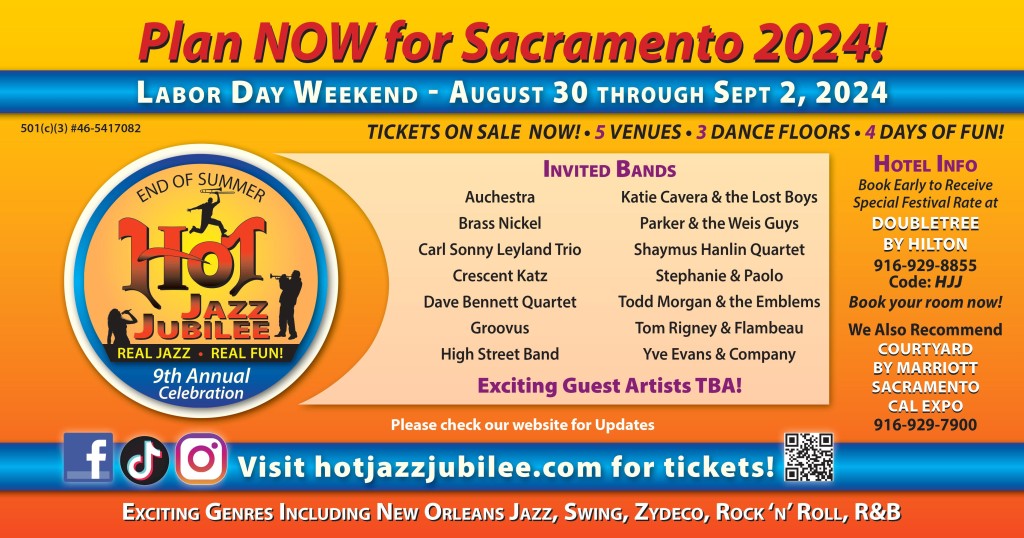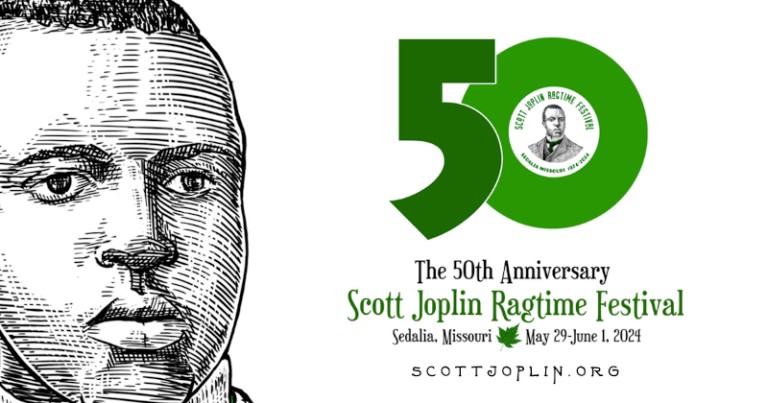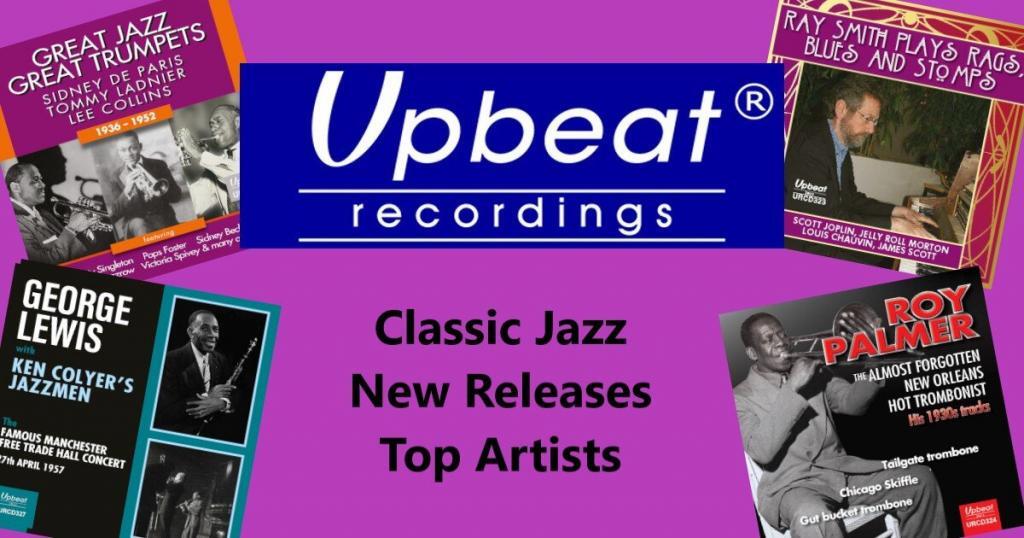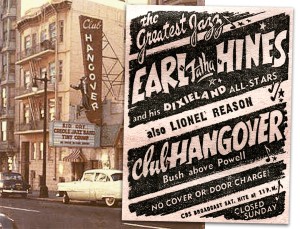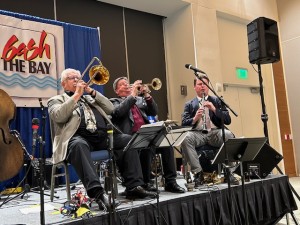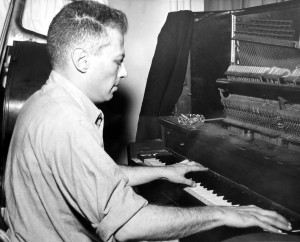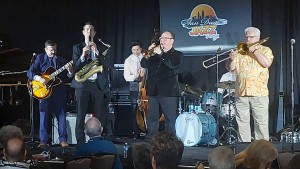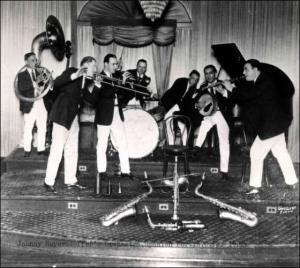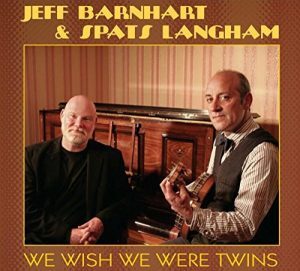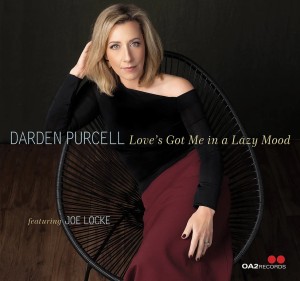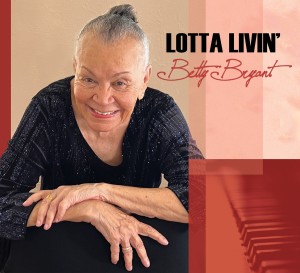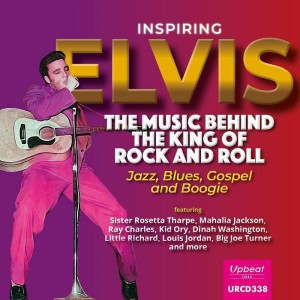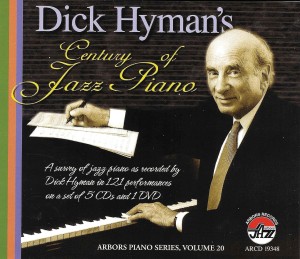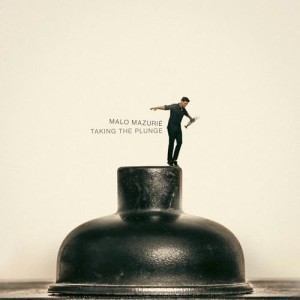 Set forth below is the fourth “Texas Shout” column, reprinted from the March 1990 issue of The American Rag (then West Coast Rag). Because the text has not been updated, I should point out that, since it appeared, the graying of the audience for Dixieland has placed all local Dixieland jazz clubs, on the West Coast and elsewhere, in precarious shape from the point of view of finances and attendance at regular presentations.
Set forth below is the fourth “Texas Shout” column, reprinted from the March 1990 issue of The American Rag (then West Coast Rag). Because the text has not been updated, I should point out that, since it appeared, the graying of the audience for Dixieland has placed all local Dixieland jazz clubs, on the West Coast and elsewhere, in precarious shape from the point of view of finances and attendance at regular presentations.
In my last “Texas Shout”, I mentioned that the skills required to play hot dance jazz are substantially different from the skills required to play other types of Dixieland. Actually, there are three main skills utilized in playing the various styles of Dixieland jazz. For purposes of today’s column, I’ll call them “reading skill”, “solo skill” and “ensemble skill”.
Reading skill is the ability to execute a written or memorized arrangement with the proper degree of jazz phrasing and feeling. As explained in my previous column, it is the most important skill in the hot dance style of Dixieland.
Solo skill is the ability to conceive novel and interesting improvisations, together with the instrumental ability to execute those improvisations as they are conceived. Although soloing is important in all jazz styles, solo skill is most highly valued in Chicago-style Dixieland, where the solos are the focus of the performance.
Ensemble skill is the ability to listen at once to as many as seven other musicians improvising simultaneously while, at the same time, conceiving and executing an improvisation that will enhance and complement their efforts, making the whole greater than the sum of its parts. This is the most highly-valued skill in the other styles of Dixieland, such as uptown New Orleans, West Coast revival, etc.
Many Dixielanders possess all three of these skills to some degree. However, it should be noted that being particularly proficient at one of these skills does not necessarily guarantee adequate performance at either of the other two.
That is the reason why so many hand-picked all-star bands fail to jell as units. All-stars are usually selected for their superior solo skills. However, a group of outstanding soloists may include several artists with below-average ensemble skills. In a Dixieland band, even one performer who functions poorly in an ensemble can bend the overall results out of shape.
Sidney Bechet, for example, though arguably the finest soloist Dixieland jazz ever produced, was a relatively weak ensemble player, being a flamboyant artist who tended to dominate ensembles. Bechet’s best ensemble recordings were made on those occasions when he was matched with other top players who were equally strong-willed, and who could stand their ground with Bechet in an ensemble context.
A player in a hot dance band should practice by spending time sight-reading, or by going over any memorized arrangements to be sure his notes are fixed in his mind and can be instantly executed. Depending on the difficulty of the scores, and on the other instruments with which he has to blend, he may also need to work on range and tone.
A player desiring to practice ensemble skills should seize every opportunity to play with other improvising Dixielanders, in as many different combinations and styles, with as varied a repertoire, as possible. Failing that, ensemble practice could be gained by playing along with a good variety of recordings.
A player practicing solos is going to work on developing licks and creating logical melodic lines. Playing with records is suitable for this purpose, but a sufficiently broad-based musician might be able to get by practicing with a metronome (or without one, if he has a sure enough sense of rhythm).
A professional musician will often need to attain a professional standard in all three areas. He will have the time to do the required practicing and will usually have to be proficient at reading, soloing and ensemble playing if he is to compete successfully for whatever gigs may come his way.
The problem is that these days, except for a few areas like Orlando or New Orleans where nostalgic music is either an important part of the entertainment scene or part of the area’s tourist-attraction heritage, it is next to impossible for a musician to make a secure full-time living playing Dixieland. The overwhelming majority of Dixieland musicians seen at local jazz clubs and festivals today are semi-pros who depend importantly on full- or part-time non-musical jobs for their livelihood.
Most part-time musicians simply do not have the practice time available to become accomplished in all three areas described above. This fact has some impact on the quality of the music provided by the average Dixieland band we hear today.
Let’s start with soloing, which is the most discouraging area. Becoming a consistently creative soloist requires constantly working to expand one’s ideas and to extend one’s self. A musician who practices an hour or two a week and then plays a gig or two on the weekend is very unlikely, unless unusually gifted, to do more than get himself back to where he was last weekend by the time he finishes his weekly cycle. He will spend most of his solo time reworking favorite figures and standard licks that lie comfortably under his fingers.
Unfortunately, and it pains me to say so, the level of soloing we hear these days from the part-time bands is pitifully weak, even from many of the best-known players and combos. As a record reviewer over the past twenty-plus years, I’ve heard a pretty representative sampling of what’s out there. I’d be hard put to name more than a small handful of part-time Dixielanders who manage to get through a record (or a festival set) without substantially repeating themselves as soloists and leaving me with an uncomfortable sense of deja vu.
Whether you like the all-star jam sets or not, the fact is that if you like consistently inventive soloing, you’re much better off to spend time with the name pros on the all-star festival sets, even if their ensembles seem chaotic. Similarly, if you are a budding Dixielander who wants to learn to solo, the records of your favorite organized bands are not going to teach it to you as well as the recordings of the famous professional soloists.
The news is much better in the other two areas. In particular, I’ve observed that the typical format for West Coast Dixieland jazz club meetings almost always includes several informal jam sets for the members. In those cases, a person desiring to jam will be matched, from month to month, with a wide variety of players, of all levels of ability and in a mix of styles.
This admirable practice not only helps involve people in the music, to ensure some sort of steady supply of players, but it is ideal for developing ensemble skill. I feel sure that this factor is an important one in the relative health of Dixieland jazz on the West Coast as compared with the rest of the country (where the informal jam session is generally not an integral part of local jazz club meetings).
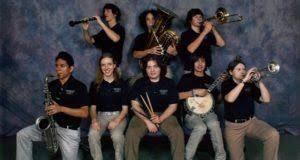
Finally, most players learned their instruments in school, where they were also taught to read music. If the school had a stage band program, they were also taught to read with a jazz feeling and to read more complex licks than are usually found in a Dixieland arrangement.
After leaving school, such players can gravitate rather easily to Dixieland, which is all to the good for our music. There are quite a few bands out there which are either reading their charts or obviously performing memorized arrangements, and doing a most effective job thereof.
So-called purists may scoff at Dixieland that isn’t fully improvised, but as I pointed out in my previous column, hot dance is a perfectly valid Dixieland style. In today’s climate of part-time musicians, the presence of arrangements provides a way for a band to play a much broader and more varied program than it could if the sidemen were required to memorize the entire band’s book in the limited practice time available to them. Also, the presence of the arrangements makes it possible to bring younger musicians, fresh from their stage-band training, into a Dixieland situation that allows them to feel comfortable and be productive while learning the rules of the music.
None of the foregoing remarks is intended to be critical of the scene or of the players that comprise it. They’re designed more to help the non-musician fans in the crowd better understand what’s going on onstage. Once you’ve grasped the dynamics of the situation, I think you’re likely to be more forgiving of any weaknesses caused by the circumstances under which we all have to function today, and thereby enjoy yourself more. And what should Dixieland be all about, if it isn’t enjoying yourself?
Back to the Texas Shout Index.

The full run of “Texas Shout” has been collected into a lavishly illustrated trade paperback entitled Texas Shout: How Dixieland Jazz Works. This book is available @ $20.00 plus $2.95 shipping from Tex Wyndham, On request, Tex will autograph the book and add a personalized note (be sure to tell him to whom the note should be addressed).
Tex Wyndham’s 3 CD Guide to Dixieland with music and commentary is available for $20 plus $2.95 shipping. The separate CD, A History of Ragtime: Tex Wyndham Live At Santa Rosa, is available for $13.00 plus $2.00 shipping. On request, Tex will autograph the inner sleeve and add a personalized note (be sure to tell him to whom the note should be addressed).
Send payment to Tex Wyndham, P.O. Box 831, Mendenhall, PA 19357, Phone (610) 388-6330.
Note: All links, pictures, videos or graphics accompanying the Shouts were added at the discretion of the Syncopated Times editorial staff. They did not accompany the original columns and do not necessarily reflect the opinion of Tex Wyndham.
